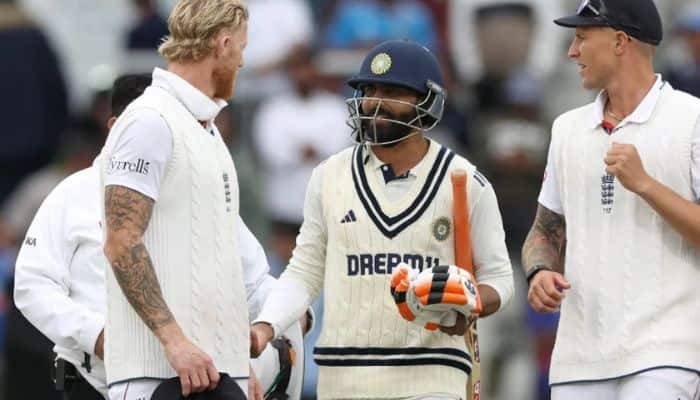The final day of the fourth Test between India and England at Old Trafford offered high-quality cricket — and an unexpected flashpoint. With just an hour left, England captain Ben Stokes invoked ICC Playing Condition 16.1.1, offering an early draw under the provision that allows both captains to agree that no result is possible. But when India declined — with Ravindra Jadeja on 89* and Washington Sundar on 80* — tensions flared, and the spirit of cricket was suddenly up for debate.
So, who was right? Was Stokes justified in wanting to end early? Or did India have every right to chase personal milestones within the laws of the game?
The ICC Rule Explained: What Does Law 16.1.1 Say?
According to ICC Test Match Playing Conditions, Clause 16.1.1 states:
“A match is drawn if no result is possible and both captains agree to terminate play.”
Importantly, this is not mandatory. It’s a mutual decision — and a captain has every right to decline the offer. In this case, India exercised that right, with Jadeja and Sundar closing in on well-earned centuries after saving the match.
India had lost only four wickets and were 75 runs ahead. The pitch was docile. The threat of collapse had passed. The team was safe — but the batters still had personal landmarks within reach. The match situation allowed it. The ICC rules allowed it. And so did the unwritten rules of Test cricket pride.
Stokes Offers Draw, India Declines — Tension Follows
Ben Stokes, nursing niggles and mindful of his bowling unit’s workload, decided enough was enough. England had bowled 257.1 overs across five days. Archer and Woakes were visibly fatigued. Liam Dawson, the left-arm spinner, had bowled long spells exploiting the rough.
Stokes offered the draw under Law 16.1.1 — and when India declined, frustration took over.
Stokes turned to Jadeja and sarcastically asked:
“Jaddu, you want to get a Test hundred against Harry Brook and Joe Root?”
The remark, caught on stump mic, sparked immediate criticism. Was it fair for Stokes to question India’s intent when the law clearly permitted them to continue?
Gavaskar, Gambhir, Manjrekar: The Verdict from Indian Legends
Veteran commentator Sunil Gavaskar was quick to defend India.
“If a batter has weathered two sessions and saved the game, why shouldn’t he aim for a century?”
Gautam Gambhir, India’s head coach, echoed the sentiment:
“They deserved that hundred. They fought hard. You don’t walk off just because the opposition is tired.”
Sanjay Manjrekar didn’t hold back:
“Stokes behaved like a spoilt kid. Everything won’t go your way just because you ask nicely.”
Brook’s Bowling and the Protest in Disguise
After India declined the draw offer, England made a mockery of the final overs. Harry Brook, not a frontline bowler, sent down underarm lobs at 60 kmph. Jadeja responded by launching one for six to complete his century. Sundar followed soon after with his maiden Test hundred. Only then did India agree to shake hands.
Was this England’s passive-aggressive protest? Or was it a moment of sportsmanship gone wrong?
What Does the ICC Rule Say About This?
Crucially, nowhere in the ICC rules is there a stipulation that batters must accept a draw if offered. Nor is there any provision for enforcing one without mutual agreement. Law 16.1.1 exists to allow a draw — not force one. India, having secured the draw on merit, played well within the framework.
In fact, continuing to bat — while seemingly milestone-driven — also served strategic goals. With just three days before the final Test at The Oval, India kept England’s tired bowlers in the field longer. Tactical? Yes. Petty? Not at all.

